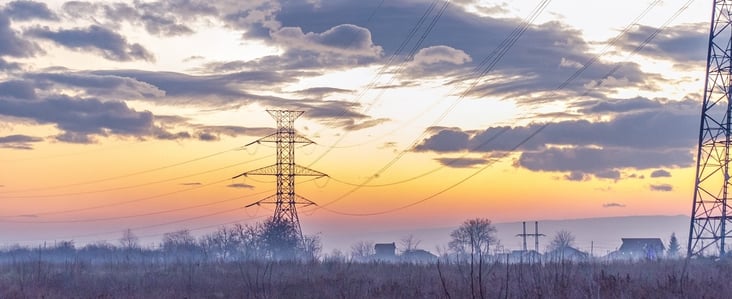
Even as the D.C. Circuit Court weighs the future of EPA’s Clean Power Plan (CPP), states across the country are figuring out how to reduce carbon emissions in the electric power sector. Some states are also beginning to look at how they will administer the compliance plan that gets them to their CPP targets. For many state air regulators, who are used to tracking pollutants coming out of power plant smokestacks, the idea of incorporating “outside the fence line” measures into CPP compliance plans can seem challenging. In particular, concerns might arise when it comes to any aspect of the CPP that involves providing credits to owners and operators of clean energy resources for the emission reductions produced by their technologies, whether as part of the Clean Energy Incentive Program (CEIP), allowance allocations in mass-based programs, or emission reduction credits in rate-based plans.
Some regulators might be tempted to restrict their plans to onsite measures, such as power plant efficiency upgrades, which might seem more familiar and easier to handle administratively. But those retrofits are more costly and provide limited emissions reductions. In contrast, measures like energy efficiency and renewable energy development are cheaper for customers and more effective in reducing emissions, but they are unlike the pollution controls many of these agencies have overseen in the past.
Given fiscal pressures on state budgets and limited staffing, what’s a regulator to do? The answer: go outside the agency for help.
Finding and maximizing efficiencies in plan implementation is a no-brainer: it can save the state money, reduce administrative burdens, and speed up and simplify the process by which emission credits are distributed and tracked. In short, it can help make carbon emission reduction measures faster, cheaper, and easier to quantify.
One way states (and EPA in the case of a federal plan) can achieve administrative efficiencies and enable the use of lower-cost measures like energy efficiency and renewable energy in compliance plans is by using third-party entities to perform some of the functions of CPP implementation. A new paper, Use of “Third-Party Entities” for State and Federal Implementation of the Clean Power Plan: Issues and Options written by attorneys at the law firm Van Ness Feldman, outlines ways regulators can make use of outside entities to make implementation of the CPP easier, particularly when it comes to compliance measures that may be new to environmental regulators.
To dive deeper into what states can do to take advantage of third-party entities for efficient and low-cost CPP compliance, AEE will be hosting a webinar on Oct. 27.
Third-party entities are already being used across the country to help administer other state, regional, and federal programs and standards. California and the Regional Greenhouse Gas Initiative (RGGI) both use outside organizations to administer parts of their respective greenhouse gas offset credit trading activities. The California Air Resources Board (CARB), for example, uses private “Offset Project Registries” to review applications for completeness and assist in other administrative tasks. Many of the 29 states that have renewable portfolio standards (RPSs) use third parties to issue and track renewable energy credits (RECs) used for compliance. PJM-EIS’ Generation Attribute Tracking System is just one example of such an entity. New England Independent System Operator (ISO-NE) also uses third-party entities, including the New England Power Pool (NEPOOL) to incorporate energy efficiency in its forward capacity market. In each of these examples, outside groups provide technical expertise while also streamlining program implementation.
The CPP affords states the same opportunity to capture administrative efficiencies through the use of third-party entities. In fact, in its recently proposed CEIP rule, EPA has explicitly blessed state use of third party entities for this purpose, including during the early action crediting period. While every state will have its own implementation plan (and some states may be subject to an EPA-administered federal plan), the CPP establishes certain requirements that all plans must meet. The VNF paper outlines these requirements in detail and highlights particular areas where it would be easy to delegate certain administrative functions to outside vendors and even consolidate some of those functions under a single vendor.
As an example, each project receiving credit under the CPP requires a certain level of documentation and tracking. If an energy efficiency provider wants to receive a tradable credit for emission reductions provided in a state, its project must go through a process that includes (among other things) an eligibility application, substantive project review and registration, and periodic independent measurement and verification. Credits then have to be issued for emission reductions achieved and those credits must be registered and tracked to avoid double-counting.
Outsourcing some or even many of these functions would allow state regulators to focus their attention on final review and approval of credits, reducing administrative burden while leveraging the substantial expertise that third-parties have with respect to things like measurement and verification of energy savings. As examples, an entire industry exists for independent measurement and verification and a number of registries, from PJM-EIS' Generation Attribute Tracking System to the new National Energy Efficiency Registry (NEER), could provide a range of these functions..
In order to ensure that state plans establish the most robust and efficient process for earning credits under the CPP, state air regulators should explore ways that third-party entities can help administer state plans. These entities can reduce regulators’ workload by taking on administrative tasks, simplifying application and tracking processes, and providing technical expertise and quality assurance. They can also help ensure that applications and reports are accurate, complete, and legitimate, assisting the regulator in the substance of complying with the CPP.
Bottom line: With the help of third-party entities, administering the Clean Power Plan could be a piece of cake!
Download the paper by clicking the button below, or register for the webinar by clicking above!

